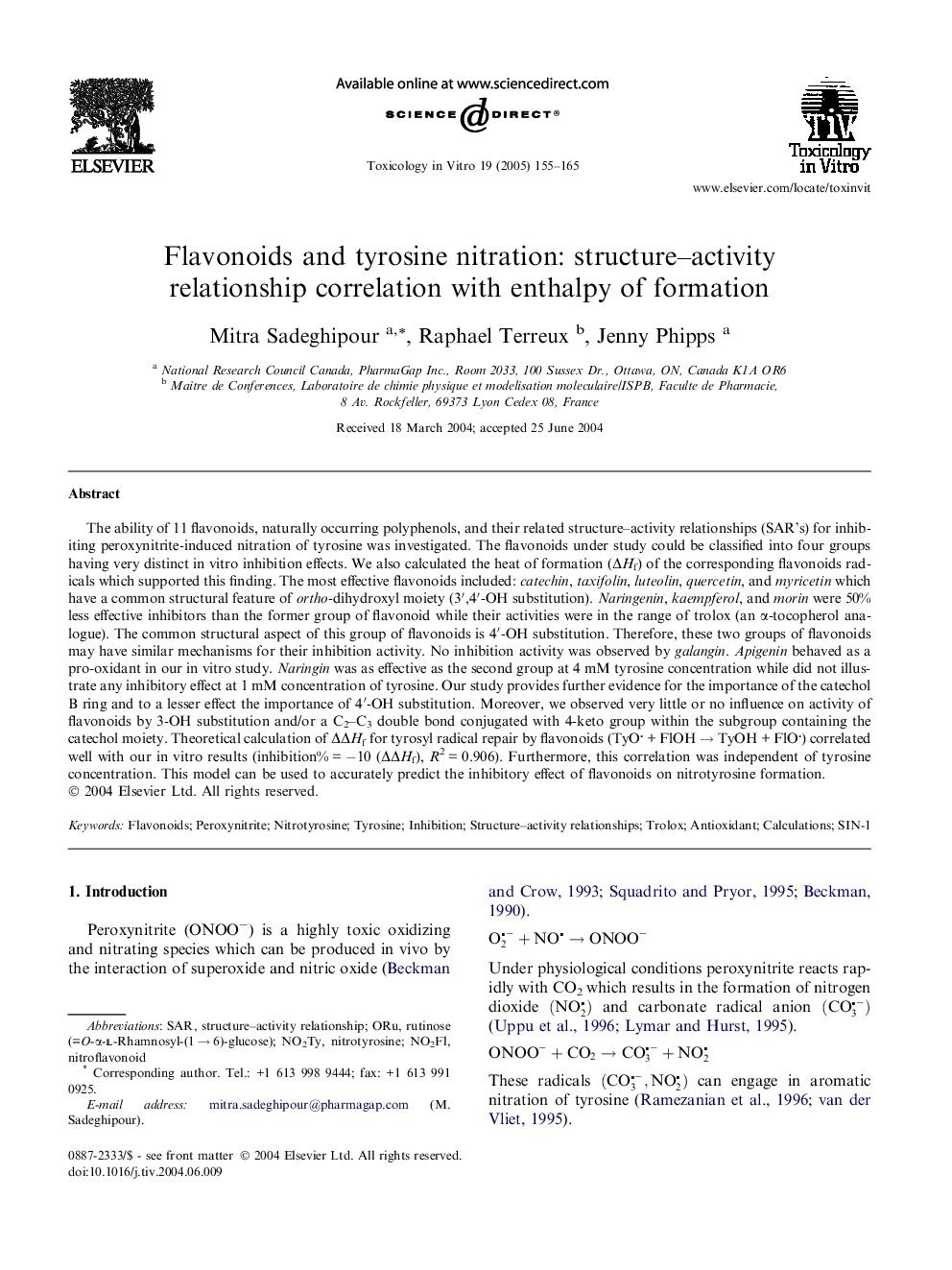| Article ID | Journal | Published Year | Pages | File Type |
|---|---|---|---|---|
| 9038461 | Toxicology in Vitro | 2005 | 11 Pages |
Abstract
The ability of 11 flavonoids, naturally occurring polyphenols, and their related structure-activity relationships (SAR's) for inhibiting peroxynitrite-induced nitration of tyrosine was investigated. The flavonoids under study could be classified into four groups having very distinct in vitro inhibition effects. We also calculated the heat of formation (ÎHf) of the corresponding flavonoids radicals which supported this finding. The most effective flavonoids included: catechin, taxifolin, luteolin, quercetin, and myricetin which have a common structural feature of ortho-dihydroxyl moiety (3â²,4â²-OH substitution). Naringenin, kaempferol, and morin were 50% less effective inhibitors than the former group of flavonoid while their activities were in the range of trolox (an α-tocopherol analogue). The common structural aspect of this group of flavonoids is 4â²-OH substitution. Therefore, these two groups of flavonoids may have similar mechanisms for their inhibition activity. No inhibition activity was observed by galangin. Apigenin behaved as a pro-oxidant in our in vitro study. Naringin was as effective as the second group at 4 mM tyrosine concentration while did not illustrate any inhibitory effect at 1 mM concentration of tyrosine. Our study provides further evidence for the importance of the catechol B ring and to a lesser effect the importance of 4â²-OH substitution. Moreover, we observed very little or no influence on activity of flavonoids by 3-OH substitution and/or a C2-C3 double bond conjugated with 4-keto group within the subgroup containing the catechol moiety. Theoretical calculation of ÎÎHf for tyrosyl radical repair by flavonoids (TyO + FlOH â TyOH + FlO) correlated well with our in vitro results (inhibition% = â10 (ÎÎHf), R2 = 0.906). Furthermore, this correlation was independent of tyrosine concentration. This model can be used to accurately predict the inhibitory effect of flavonoids on nitrotyrosine formation.
Keywords
Related Topics
Life Sciences
Environmental Science
Health, Toxicology and Mutagenesis
Authors
Mitra Sadeghipour, Raphael Terreux, Jenny Phipps,
